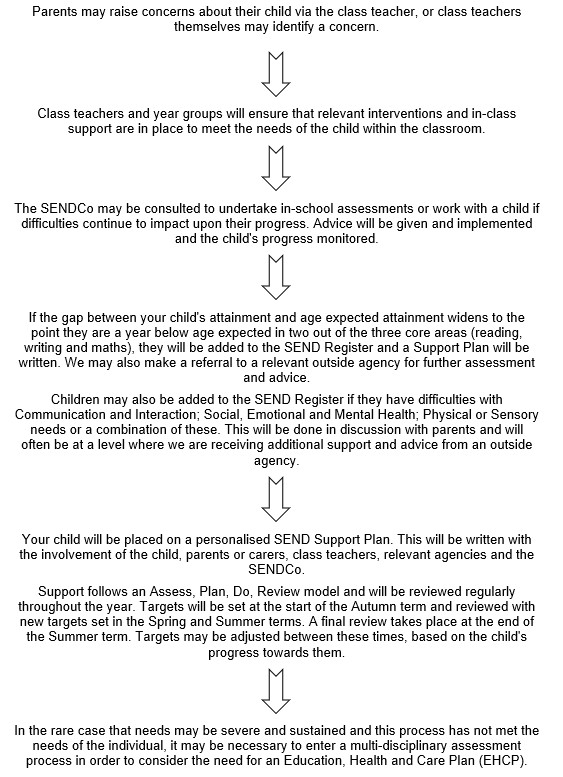- Home
- Key Information
- Special Educational Needs and Disabilities (SEND)
- How is a child identified as having Special Educational Needs?
How is a child identified as having Special Educational Needs?

Where a pupil is identified as having SEND, to enable the pupil to take part, learn and make progress we look at how to remove barriers to learning and put effective provision in place. SEND support should come from a four-part cycle – the Graduated Approach.
The four stages are:
- Assess
- Plan
- Do
- Review
This approach starts at whole school level as teachers are constantly assessing, planning, implementing and reviewing their work with children. However, where a special educational need has been identified, the process becomes more personalised to the child and their needs.
There are 4 areas of SEND in the Code of Practice. When a child is entered onto the SEND Register it will be under one, or more, of the following headings:
- Communication and Interaction
- Cognition and Learning
- Social, Emotional and Mental Health Difficulties
- Sensory and/or Physical Needs
Where gaps or needs have been identified, interventions will be put into place to address these. This could be 1:1 support, small group work or adjustments within the whole classroom setting. Interventions for children on the SEN Register are monitored to evaluate the impact that they have. Monitoring is through classroom observations, individual Support Plans and class teacher assessment. All this feeds into the four strands of the cycle and helps personalise the learning for the child.
Page Updated by HF and KJD on 23/10/24
